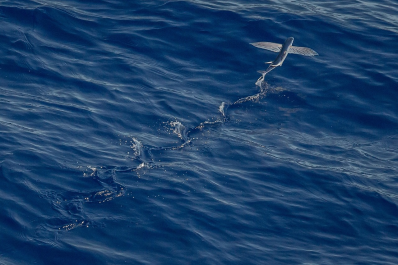Colons for lists: flying fish
The Grammar Bit!
Read the three scintillating list sentences opposite. You’ll remember from Year 2 that commas are used to separate individual items and actions in a list (apart from between the final 2 items or actions when the coordinating conjunction ‘and’ is commonly used instead).
Now that you are in Year 6, we can get a little bit more ‘sophisticated’ with our list sentence writing. Notice how a colon (:) has been used to introduce each list of items or actions. When using a colon in this way, each introductory clause (bold) should be able to stand alone as a main clause.
If the introductory clause cannot stand alone, it would be incorrect to interrupt the flow of it with a colon.
Example
(Incorrect) Fish can survive in: rivers, oceans, streams and seas.
(Correct) There are many environments fish can survive in: rivers, oceans, streams and seas.
Notice also how the words that follow the colon in each list do not start with a capital letter (unless, of course, they are proper nouns).
Scintillating Sentences
1) Flying fish prefer warm tropical and sub-tropical water, and they can be found in several of the planet’s oceans: the Atlantic Ocean, the Pacific Ocean and the Indian Ocean.
2) Unfortunately, flying fish have many predators within the water: dolphins, tuna, squid and marlin.
3) Flying fish have many features on their body that allow them to ‘glide’ through the air: a strong rigid spine, curved fins (similar to a bird’s wing) and a streamlined body to reduce drag.

Did you know?
The flying fish is the national symbol of Barbados. This is because these fascinating marine vertebrates are a common sight around this Caribbean island. This tiny island country is also nicknamed the ‘Land of the Flying Fish.’

 Sign in
Sign in